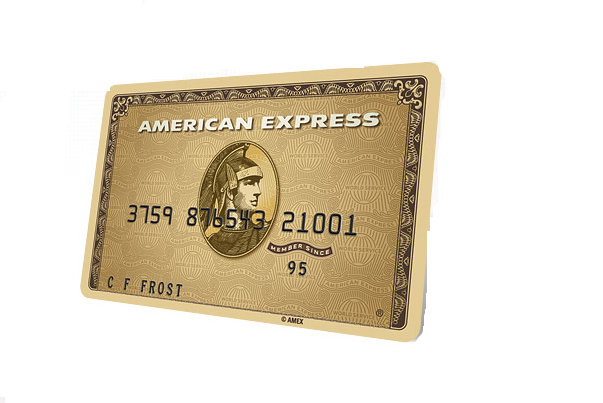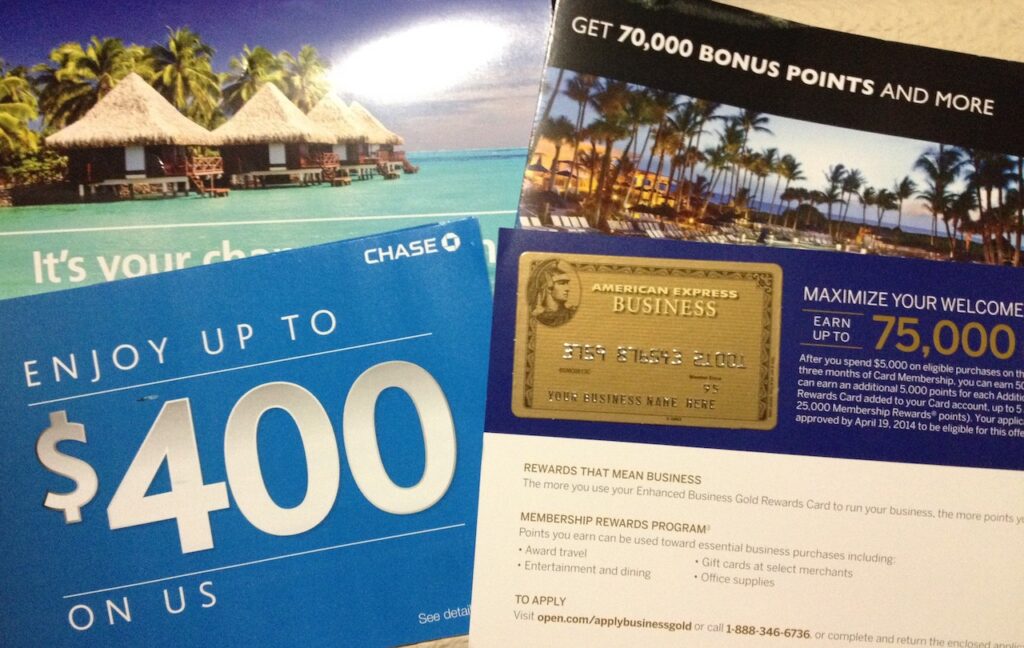By now you’ve probably been inundated with news of the 75,000-point welcome bonus for the Chase Sapphire Preferred® Card and Chase Sapphire Reserve®. If you’re interested in either card, you might want to apply soon because this offer will end on June 13.
Both cards are currently offering 75,000 bonus points after you spend $4,000 in the first three months of account opening – that’s 15,000 points higher than the usual bonus.
The 75,000-point bonus is worth around $1,000 towards travel, depending on how you redeem them and which card you choose.
Of course, you’ll get even more value by transferring these points to one of Chase’s travel partners for premium redemptions. If you’re confused by all the options, here’s a breakdown of both card offers and what you can do with the points:
This site is part of an affiliate sales network and receives compensation for sending traffic to partner sites. This compensation may impact how and where links appear on this site. This site does not include all financial companies or all available financial offers.
- Is 75,000 points a good offer?
- Chase Sapphire Preferred vs. Sapphire Reserve: How the two cards compare
- Which card should you get?
- What can you do with 75,000 Chase points?
- ~$1,000 towards travel
- Round-trip business class flight to Spain (68,000 Iberia Avios)
- Summer flights to Europe (23,500 Flying Blue miles)
- Seven short-haul United flights (10,000 Aeroplan points)
- ANA Business Class to Tokyo (52,500-60,000 Virgin Atlantic miles)
- Six nights at an all-inclusive resort (72,000 Hyatt points)
- Bottom line
Is 75,000 points a good offer?
The 75,000-point welcome bonus is higher than the usual bonus for both cards. It’s worth noting we’ve seen offers as high as 80,000 points for the Sapphire Preferred, while the Sapphire Reserve has gone as high as 100,000 points. However, it’s been a while since we’ve seen an offer that high. So 75,000 has a lot of people excited, particularly those who are under 5/24.
If you’re looking to stock up on Chase points, this is a great way to do it.
Who qualifies for the welcome bonus?
Chase has a few rules in place that limit who can qualify for the 75,000-point welcome bonus on the Sapphire cards. Both cards require good to excellent credit (usually 700 or above). But beyond this requirement, you may not qualify for a new welcome bonus if the following applies to you:
- Chase 5/24: The most infamous of Chase application rules! If you’ve applied for five or more cards from any bank in the last 24 months, you won’t qualify for a new Chase card.
- You received the welcome bonus in the past 48 months: If you received a welcome bonus for either Sapphire card in the past 48 months, you won’t be eligible for another one. You’ll need to wait for the 48-month mark before you’re eligible for the bonus.
- One card at a time: You can only have one Sapphire card open at a time. So, if you currently have a Sapphire Preferred card, you won’t be eligible for a Sapphire Reserve (and vice versa).
Chase Sapphire Preferred vs. Sapphire Reserve: How the two cards compare
The Sapphire Preferred and Reserve are very similar in terms of rewards and premium benefits. You’ll earn more points and access more travel benefits with the Sapphire Reserve Card. Meanwhile, the Sapphire Preferred is a better value for infrequent travelers who want a rewarding card for everyday spending along with practical travel protections.
Here’s a closer look at how the two cards stack up against each other:
| Chase Sapphire Preferred | Chase Sapphire Reserve | |
| Welcome bonus | 75,000 points after $4,000 spent within three months of account opening. | 75,000 points after $4,000 spent within three months of account opening. |
| Points are worth | 1.25 cents each towards Ultimate Rewards Travel. | 1.5 cents each towards Ultimate Rewards Travel. |
| Earn rate | 5X points on Chase Travel bookings (excluding hotels that qualify for the $50 hotel credit). 3X points on dining (including eligible delivery services, takeout, and dining), online grocery purchases (excluding Target, Walmart, and wholesale clubs), and select streaming services. 2X points on travel. 1X on everything else. 10% spending bonus every anniversary year. | 10X points on hotels and cars booked through Chase Travel bookings (after the first $300 spent on travel). 10X points on Chase Dining. 5X points on flights booked through Chase Travel. 3X points on dining (including eligible delivery services, takeout, and dining), online grocery purchases (excluding Target, Walmart, and wholesale clubs), and select streaming services. 3X points on travel worldwide (after the first $300 spent on travel). 1X on everything else. |
| Annual travel credit | $50 credit towards Chase Travel hotel bookings. | $300 credit towards any travel purchase. |
| Lounge benefits | None | Priority Pass Membership. Complimentary access to Chase Sapphire Lounge network. |
| Other travel benefits | No foreign transaction fees. | No foreign transaction fees. $100 Global Entry, TSA Precheck or NEXUS fee credit. Elite status upgrades and discounts with Avis, Hertz, National and Audi on Demand. |
| Insurance benefits | Trip cancellation/interruption insurance, trip delay reimbursement, travel accident insurance, travel and emergency assistance services, baggage delay insurance, lost luggage reimbursement, emergency evacuation and transportation, Emergency medical and dental coverage, roadside assistance, and primary rental car coverage. | Trip cancellation/interruption insurance, trip delay reimbursement, travel accident insurance, travel and emergency assistance services, baggage delay insurance, lost luggage reimbursement, emergency evacuation and transportation, Emergency medical and dental coverage, roadside assistance, primary rental car coverage. |
| Annual fee | $95 | $550 |
| Authorized user fee | $0 | $75 |
Which card should you get?
Both cards offer exceptional value for the right customer. The Sapphire Preferred is a great choice if you want to earn valuable points for travel at a reasonable annual fee. It’s widely considered one of the best travel rewards cards for the annual fee and flexible redemption options.
The Sapphire Reserve often ranks as one of the best premium credit cards. In exchange for a $550 annual fee, cardholders receive an annual $300 travel credit, Priority Pass membership, better category bonuses, and best-in-class travel protections.
Since the welcome bonus and spending requirements are the same, the best card depends on your travel preferences and credit profile. Both cards require good to excellent credit, but the Sapphire Reserve is a notch above the Preferred.
When deciding between the two cards, consider your personal spending habits and needs. Regardless of which card you decide on, you can always upgrade or downgrade it later if you want more benefits or prefer a lower annual fee.
Who should get the Sapphire Preferred?
If you don’t travel enough to utilize the Sapphire Reserve’s $300 annual travel credit and lounge perks, then the Sapphire Preferred will suffice. It earns up to 5X points in popular spending categories and provides plenty of travel protections for when you hit the road. Plus, you’ll receive an annual 10% bonus on the points you’ve earned.
For example, if you earn 10,000 points a year you’ll get a 1,000-point bonus. This bonus can add up substantially, especially on everyday purchases.
The annual $50 Chase hotel credit partially offsets the $95 annual fee. As long as you redeem that credit and earn/burn at least 3,600 points every year, you’ll break even.
Who should get the Sapphire Reserve?
The Chase Sapphire Reserve is best for frequent travelers who can maximize the lounge benefit and rental car perks. The card offers elevated rewards on travel, making it ideal for those who spend significantly in this category. The card’s $550 annual fee is largely offset by the $300 travel credit.
Taking this credit into account, the difference in annual fees between the Sapphire Preferred and Reserve comes down to $155. It’s further reduced if you claim the $100 trusted traveler program credit every four years and take advantage of the card’s elevate category and redemption bonuses.
To justify the higher annual fee (without factoring in the lounge benefit), you’ll need to earn/redeem at least 10,334 more miles every year.
What can you do with 75,000 Chase points?
With inflation and post-pandemic demand driving up travel costs, points are more relevant than ever for managing costs. Whether you’re making last-minute summer travel plans or looking ahead to next year, 75,000 Ultimate Rewards points can you save money and travel better. Here are a few ways you can use the welcome bonus from the Sapphire Preferred or Reserve for the best value:
~$1,000 towards travel
One of the best things about the Chase Ultimate Rewards program is how versatile the rewards are. If you don’t want to deal with loyalty program rules and restrictions, you can just redeem your points for travel bookings at a flat rate.
Your points are worth 1.25 cents each for Chase Travel booking if you have a Sapphire Preferred. Meanwhile, Sapphire Reserve cardholders get 1.5 cents in value. This makes the 75,000-point bonus worth $937-$1,125 through Chase Travel.
You can redeem your points for flights, hotels, rental cars, cruises and activities. The best part is your flight bookings are eligible to earn miles if you provide your frequent flyer number during booking.

Round-trip business class flight to Spain (68,000 Iberia Avios)
Iberia offers some of the cheapest business class tickets to Europe, at 68,000 Avios round-trip. If you’re based on the East Coast, these awards are a downright bargain.
Instead of spending thousands on business class (or economy, for that matter), you can transfer your Chase points to Iberia and book this incredible award. It’s one of the best ways to redeem your Sapphire Preferred or Reserve welcome bonus for maximum value.
Summer flights to Europe (23,500 Flying Blue miles)
Air France and KLM’s joining Flying Blue program has some of the cheapest award flights anywhere. With montlyth Promo Rewards, you can save as much as 50% on award flights worldwide. In fact, recently Flying Blue offered long-haul flights between the U.S. and Paris for as low as 15,000 miles.
While these rock-bottom rates are long gone, you might still be able to snag a few discounted summer fares. For example, I found a few one-way fares in June between Boston and Paris for 23,500 miles. Considering how much other programs are marking up their summer fares, this is a fantastic deal.
With the welcome bonus from the Sapphire cards, you can book up to three one-way economy class tickets. You’ll easily save thousands of dollars on these flights.

Seven short-haul United flights (10,000 Aeroplan points)
Aeroplan is a 1:1 transfer partner of Chase Ultimate Rewards and a great fall-back option for reasonable Star Alliance flights. With United hiking up redemption rates thanks to dynamic pricing, you can often find better deals booking the same flights through Aeroplan.
For example, short-haul flights under 2,750 miles cost as low as 10,000 Aeroplan points each way. Even longer flights are reasonably priced. For example, this summer, I found flights between San Francisco (SFO) and Cancun (CUN) for as low as 12,500 Aeroplan points each way. United is charging 20,000 miles and more for the same awards.
ANA Business Class to Tokyo (52,500-60,000 Virgin Atlantic miles)
All Nippon Airways (ANA) has one of the best business class products in the sky and you can fly it to Japan for as 105,000 miles round-trip from the West Coast. East Coast departures will set you back 120,000 miles.
While 75,000 Chase points isn’t enough for a round-trip award, Virgin Atlantic lets you book one way for half the price. You can transfer Chase points to Virgin Atlantic at a 1:1 ratio and sometimes Chase even offers a transfer bonus.
While booking through ANA is cheaper at 100,000-110,000 miles round-trip, not everyone has access to ANA miles since Amex Membership Rewards is the only ANA transfer partner.
Booking this flight with Virgin Atlantic Flying Club is still an excellent option, especially since one-way bookings are allowed.
Six nights at an all-inclusive resort (72,000 Hyatt points)
Transferring Chase points to Hyatt is one of the best ways to redeem the 75,000-point bonus. Free nights start at just 3,500 points, and even low-category hotels can provide exceptional value. While many folks like to redeem Hyatt points for luxury hotel stays, these bookings can incur numerous fees (resort fees, transportation, high cost of on-site meals).
This is where all-inclusive hotels come in. Hyatt all-inclusive hotels start at just 12,000 points per night and include the cost of meals and lodging.
One of my most memorable (and enjoyable) vacations to date was at the Hyatt Ziva Los Cabos. Not only was the food exceptional, but I loved checking out with a $0 bill at the end of my stay.
With the 75,000-point welcome bonus from the Chase Sapphire Preferred or Reserve, you can book up to six free nights at an all-inclusive Hyatt hotel. Low-category properties include the Sunscape Puerto Vallarta Resort & Spa, the Dreams Calvia in Mallorca, and the new Sunscape Coco Punta Cana.

Bottom line
The Chase Sapphire Preferred and Sapphire Reserve are both staples in many wallets and the 75,000-point welcome bonus is a great incentive to apply for one. If your spending habits align with either card’s category bonuses, it can be rewarding long-term. Both cards offer excellent travel protections that can save you money and provide peace of mind during your travels. The benefits offered by both cards provide a chance to recoup the annual fee.
Regardless of which card you opt for, you’ll have access to one of the best rewards programs, with flexible redemptions and 14 exceptional transfer partners.

